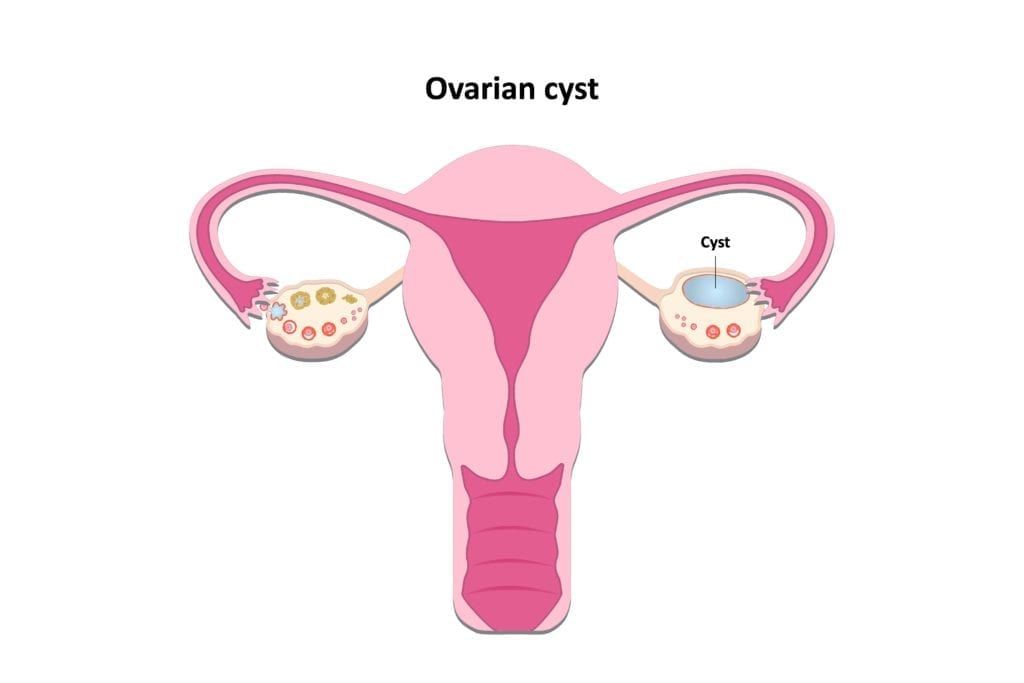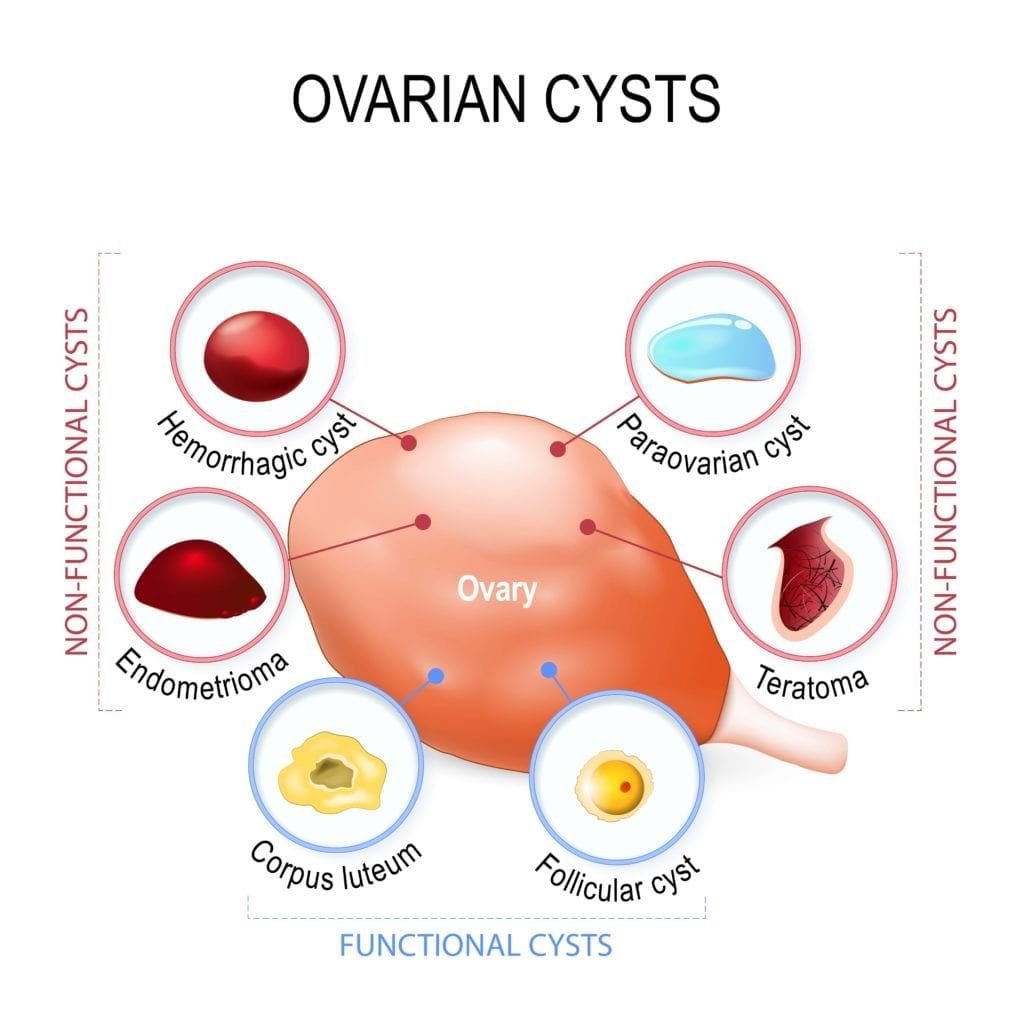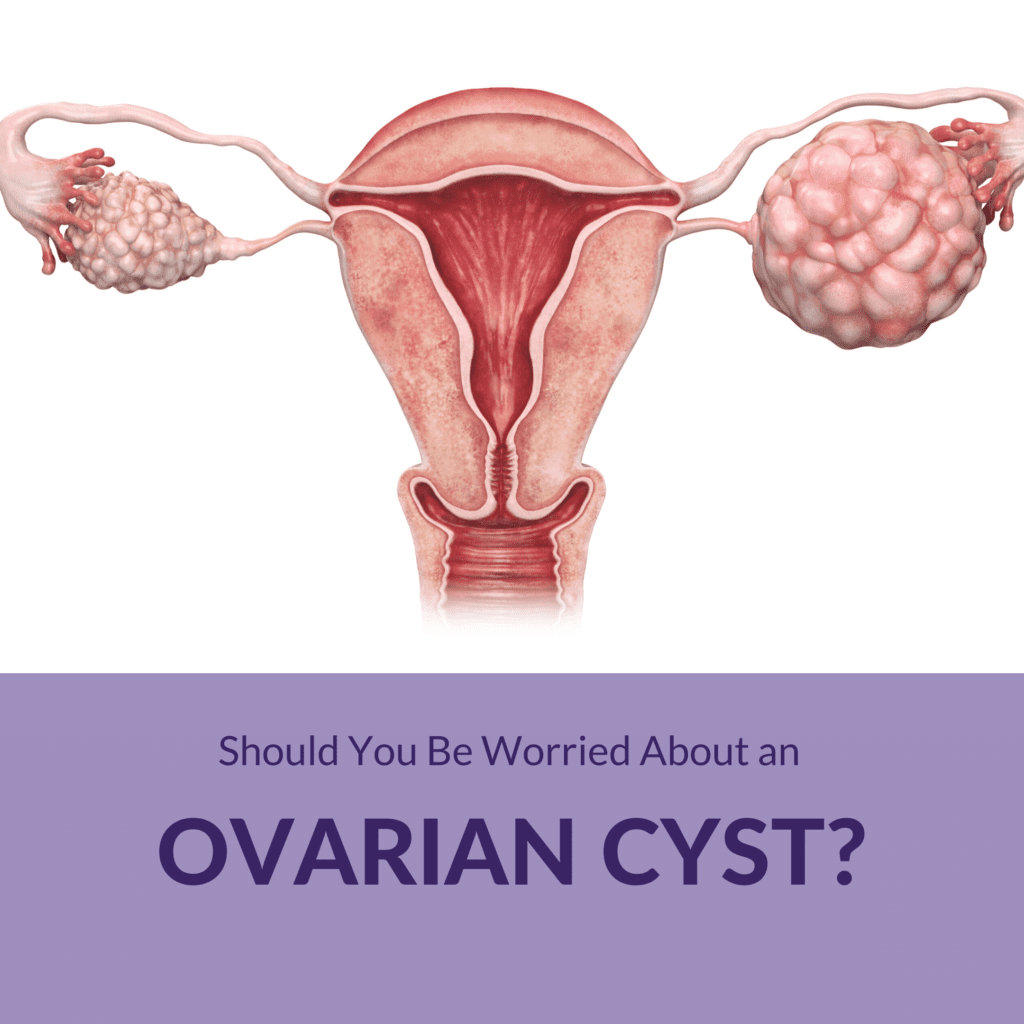Ovarian cysts are small fluid-filled sacs that can form on your ovaries. They are very common and affect as many as 3 million women every year. In fact, many women will develop an ovarian cyst at some point in their lifetime. However, you may not even know that you have an ovarian cyst since they are generally painless and don’t cause any symptoms. For this reason, the majority of ovarian cysts are no cause for concern. Unfortunately, there are a few general exceptions to this rule.
Functional Ovarian Cysts: Generally No Need to Worry
Functional ovarian cysts are the most common type of ovarian cyst and are considered to be the “good kind” of cyst. They are known as functional cysts because they are produced by normal ovary function. In fact, a cyst about one inch in diameter, as well as several smaller ones, are produced every time a woman ovulates. These functional cysts can be divided into either follicular cysts or corpus luteum cysts.

- Follicular cysts are filled with clear fluid and lack blood supply. They exist before ovulation occurs and will eventually develop into a corpus luteum cyst. Almost every woman has these, however they generally go away on their own in a few weeks. In some cases, they can grow up to 4 inches in diameter, but they are still usually monitored and left to resolve themselves.
- Corpus luteum cysts occur after ovulation and produce progesterone in order to prepare the uterus for pregnancy. Without pregnancy, these cysts will disappear in two weeks. However, corpus luteum cysts have a rich blood supply since they produce hormones, and can sometimes bleed or cause pain. Even in these cases, most corpus luteum cysts are monitored and generally resolve themselves.
Non Functional (Neoplastic) Cysts: Possible Cause for Concern

Instead of occurring as a result of natural ovary function, neoplastic cysts are new tissue that grows from tissues in the ovary. There are different types of neoplastic cysts that are differentiated by the type of cells that produced the cysts. Some examples include serous cysts, mucinous cysts, and dermoid cysts. Neoplastic cysts can continue to grow and become quite large if left untreated. For this reason, neoplastic cysts are usually removed if they have grown over 2 inches in diameter. When it comes to neoplastic cysts, it is not the type of neoplastic cyst, rather it is the size that determines if surgical intervention is needed.
Ovarian Cyst Complications: Cause for Concern
It is important to note that while ovarian cyst complications can occur, they are extremely rare. Nevertheless, here are some cases where immediate treatment may be required:
- Cancerous cystic ovarian mass: when a neoplastic cyst over 2 inches in diameter is removed, the cyst is usually biopsied to ensure that it is benign. In rare cases, the biopsy can detect that the cyst is actually malignant, meaning that it contains cancer cells or cells that can develop into cancer. In these cases, additional testing and treatment is needed.
- Ovarian Torsion: this occurs when the ovary has twisted or changed its position due to a large ovarian cyst. Ovarian torsion can cut blood supply off from the ovaries, which can damage or kill the ovarian tissue. If ovarian torsion occurs, emergency gynecologic surgery is generally required to preserve the ovary.
- Ruptured cysts: the most common symptom of a ruptured cyst is pain. Smaller ovarian cysts that rupture may just need to be monitored while managing the pain. Larger ovarian cysts that rupture can cause bleeding in the abdominal cavity and will require treatment.

Dr. Geoffrey Zann is a Certified Robotic Da Vinci Surgeon, Board-certified by the American College of Obstetricians and Gynecologists, and a Diplomat of the American Board Obstetrics of Gynecology. He has been a member of the American Society for Colposcopy and Cervical Pathology, American Association of Gynecologic Laparoscopists, and the Hugh R. K. Barber Obstetric and Gynecologic Society.
